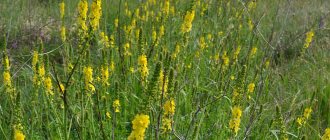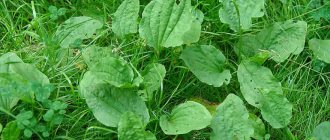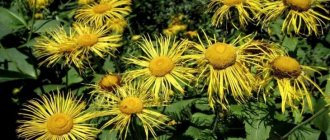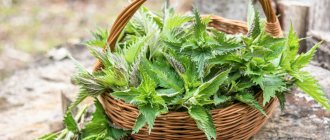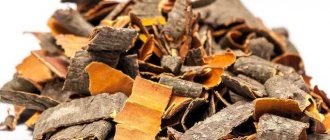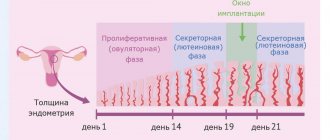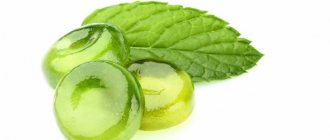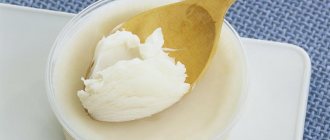For centuries, humanity has actively used anise to treat a variety of diseases. The greenish seeds of this plant were highly valued in Ancient Greece and Rome, and in the East they were even used to pay taxes. Today, anise seeds help people around the world fight various diseases, ranging from digestive system disorders to low libido.
What is anise?
Common anise, Pimpinella anisum, Anisum vulgare, Anisum officinarum, Anise - this is all the name of one plant, which, however, should not be confused with another anise, Chinese, also known as true star anise [1]. It is the Chinese plant that produces star-shaped fruits. Now we are talking about a completely different grass. The fruits of the common anise are semi-fruit seeds with 5 ribs.
Content:
- What is anise?
- Active Ingredients
- Anise: benefits and harm to the body
- Other beneficial properties of anise
- Dosages
- How to prepare seeds
- Anise oil
- Common anise tea
- Other Anise Recipes
- Anise in cosmetology
This herbaceous plant belongs to the celery family and can grow up to a meter in height. From thin spindly roots sprout fluted stems and leaves that form feathery lobes. In spring, white flowers with a delicate sweet aroma appear on the plants. In late August - early September, seeds form from them. The native lands for this plant are Egypt, Asia Minor, Greece. Although nowadays, if favorable conditions are created, anise can grow in almost any corner of the Earth.
Where does it grow?
Experts suggest that the birthplace of anise was the countries of the Middle East or the Mediterranean. Now the plant is bred for both food and medicinal use. Large areas under this plant are occupied in southern Europe, Mexico and Egypt.
In Russia, this culture has taken root in the Krasnodar region and the Central Black Earth regions. The height of anise can reach 50-60 cm; the plant blooms in mid-summer, creating complex umbrellas from small white flowers. After ripening, achenes with a spicy-sweet taste and specific aroma are formed in their place. The fruits ripen in August.
Active Ingredients
Anise seeds are 18% protein, 8-23% fat, 2-7% essential oils, 5% starch, 12-25% fiber, the rest moisture [2] .
The seeds have a delicious aroma due to the high concentration of anethole essential oil. They also serve as a source of iron, magnesium, calcium, zinc, manganese, potassium, and copper. These minerals are essential for maintaining heart function, proper blood circulation, bone health, and also help convert food into energy. The B vitamins contained in anise seeds are important for brain function.
Chemical composition
Common anise has a unique composition of chemical elements, which determines the properties and use of plant parts in medical and other industries. The main value of the plant is its fruits.
Anise seeds contain:
- coumarins;
- stigmasterol;
- vitamin C;
- vitamin P;
- vitamin B
In addition, the seeds are rich in macro- and microelements: Fe, K, Mg, Zn, Cu, Mn, Ca. Anise seed essential oil is rich in anethole, which gives the plant its characteristic odor, and anise acids.
Anise: benefits and harm to the body
The history of human use of anise as a medicine with a spicy aroma goes back at least 4 thousand years. As historians suggest, it all started from Egypt. There, according to ancient records, the plant was used as a diuretic and to treat toothache. Ancient Greek medical records mention anise as a respiratory aid, an analgesic, a diuretic, and a thirst-relieving herb [3].
The era of commercial use of anise oils began in the 1800s. Then the plant was noticed by manufacturers of cosmetics and detergents. In the food industry, it is known as a spicy additive to a wide variety of product categories, including alcoholic beverages, dairy products, jellies, puddings, meats, and candies.
Anise essential oil, as well as teas made from it, are widely used in medicine. For what purpose? This is what we will now try to understand.
Medicinal properties of anise [4]:
- facilitates expectoration;
- relieves bloating (including in children);
- acts as an antispasmodic;
- works as an antiseptic;
- soothes coughs in bronchitis and asthma;
- relieves pain from laryngitis and pharyngitis;
- relieves insomnia;
- stimulates appetite;
- relieves abdominal cramps;
- reduces nausea.
In addition, anise oil is used in folk medicine to treat head lice, scabies, and psoriasis. For nursing mothers, this remedy is suitable for increasing lactation [5].
Origin
Ancient Egypt, Lebanon, and the Eastern Mediterranean claim to be the birthplace of anise. There are references to the use of the plant as an aromatic spice in the documents of Ancient Greece, and as a breath freshener in the written monuments of Ancient Rome. Anise was of particular value in medieval Western Europe, where some countries even imposed a duty on its import, and its value was not inferior to coriander and caraway. Currently, the spice is cultivated in almost all countries of the world.
Other beneficial properties of anise
In addition to the mentioned medicinal effects, other properties of this plant are known. In particular, due to its antibacterial effect, anise is included in some toothpastes. Its anti-inflammatory properties have been compared to the effect of aspirin.
Thanks to its antioxidant properties, anise essential oil protects DNA cells from free radicals and prevents the formation of malignant tumors.
There is an opinion that anise can lower cholesterol. A 60-day experiment showed that daily consumption of seeds in powder reduces blood sugar levels by 36%, and also regulates the concentration of cholesterol and triglycerides. Crushed anise seeds applied to the forehead, neck or temples relieve headaches, particularly during migraine attacks. Experiments on rats have shown that anise promotes the absorption of iron, thereby serving as a preventative against anemia [6].
This plant also has sedative properties. Anise contains thymol, linalol, terpineol and eugenol, which reduce the appearance of nervousness and anxiety.
Interestingly, anise (seeds) belongs to the group of aphrodisiac plants. In addition, it has mild laxative and diuretic effects [7].
In combination with sassafras oil, the plant acts as a means to destroy insect pests (moths, bedbugs, cockroaches, lice) [8]. Fishermen add anise to their bait.
In the food industry, it is added as a seasoning to meat, fish, soups and sauces, pickles and confectionery.
general information
Anise belongs to a separate group of plants called aromatic plants. It also includes, for example, cumin, coriander, fennel, and dill. The peculiarity of the listed species is that they are simultaneously actively used in the food processing industry and in pharmacology.
Common anise, or ganus, is a herbaceous, pubescent plant belonging to the celery family (other names are umbelliferous, celeryaceae).
Its life cycle lasts for one growing season, which ranges from 120 to 140 days. Asia Minor is considered the birthplace of anise. Today it is found as wild only in Greece. However, the plant is widely grown in North Africa, Southern Europe, India, and America.
In Ukraine, anise is cultivated primarily in the forest-steppe zone. The total sown area under the plant is 90–110 thousand/ha.
Biological features
Anise grows best on light and medium loamy chernozems. The plant feels uncomfortable on clay and sandy soils.
Common anise loves light and warmth and does not tolerate shade. In order for the plant seeds to germinate, the soil temperature must be at least 4–5 °C. In addition, the moisture content of the chernozem should be quite high.
Anise begins to absorb moisture especially intensively at the stage of seed germination. If there is not enough moisture, the plant blooms: a small amount of greenery appears on it and few seeds.
Once in the soil, anise seeds germinate in approximately 17–25 days. This depends, first of all, on the temperature: the colder it is, the longer the process takes.
Botanical characteristics
Common anise grows in height from 20 to 80 cm (according to other sources - up to 1 m). Its stem is erect, cylindrical, grooved, branched in the upper part.
The plant is densely covered with leaves of different structures. They are located alternately on the stem and are represented by three varieties: the lower ones - on long petioles, heart-shaped, the middle ones - on short petioles, tripartite, the upper ones - double or triple pinnately dissected.
Anise flowers are small, five-petaled, white. They are collected in complex umbrellas, combining 7–8 simple ones, each of which can contain from 7 to 20 flowers. The inflorescences are placed on a long peduncle.
Common anise is often identified with star anise, another name for which is also anise (star anise, Chinese, etc.). These plants are indeed distant relatives, so they have a similar aroma and taste. However, star anise is a tropical tree of the Schisandra family native to China.
Medicinal raw materials
Common anise blooms in June–July, and its fruits appear in August. It is this part of the plant that is used for medicinal purposes.
The fruits of anise are pear-shaped or ovoid two-seeded seeds: they consist of two interconnected semi-fruits - mericarps. However, they may disintegrate when ripe.
The cremocarp of anise is laterally flattened, 3–5 mm in length and about 3 mm in width. The mericarp, in turn, has a convex outer side and a flat inner side.
The anise fruit is greenish-gray or yellowish-gray and covered with a small number of short hairs. It has an intense sweetish aroma and spicy taste.
A special feature of anise fruit is its grooved surface: ten longitudinal, straight, thread-like whitish ribs are noticeable on the cremocarp - five on each mericarp. In the spaces between them are placed tubules filled with essential oil: it is thanks to this that anise fruits are valuable both in medicine and perfumery, the food industry and other industries.
Dosages
Today there are no clearly defined norms for the consumption of anise, just as there are no calculated daily norms for it. Most often, 0.5 to 2 grams of seeds or 0.2-0.3 ml of essential oil are used to treat digestive system disorders.
In the form of an infusion, usually take 1-2 teaspoons of crushed seeds per glass of boiling water. In the form of oil, herbalists advise consuming 1 drop of the substance with half a teaspoon of honey.
This plant is considered safe for humans, however, abuse of seeds or essential oil can cause side effects in the form of an allergic rash, difficulty functioning of the respiratory and digestive systems. An overdose of essential oil causes vomiting, convulsions, and sometimes pulmonary edema, paralysis, mental disorders, and coma.
The main contraindication for taking anise preparations is pregnancy, since this plant has abortifacient properties.
Procurement of raw materials
Common anise is harvested when half of its fruits are ripe. At the same time, the stems turn a little yellow, and the fruits on the central umbrellas become brown. Ripe fruits must be healthy - have the color and spicy smell characteristic of normal fruits.
It is important to start collecting anise seeds on time, because very ripe fruits quickly fall off.
Features of collection, drying and storage
Special harvesting machines are used to harvest large quantities of anise. And in the process of harvesting raw materials on small plantations, anise is cut with a sickle or scythe, and then raked into windrows or knitted into sheaves; or cut the umbrellas with scissors and form small bunches of them. In this form, the raw materials are dried in rooms with good ventilation or under a canopy.
Then they thresh and clear of soil, sand, particles of stems, leaves, and seeds of other plants.
It is possible to thoroughly clean anise fruits from foreign impurities only in special production. Therefore, it is better to buy anise fruits at the pharmacy.
It is also permissible to harvest slightly darkened anise fruits if they have lost their natural color due to unfavorable harvesting conditions.
Store medicinal raw materials in a dry, cool place, protected from light. Under such conditions, anise fruits do not lose their healing properties for three years.
Anise oil
Anise oil is obtained from the seeds of the herb through steam distillation. The highest quality product is obtained from ripe seeds located in the center of the umbrella. The range of uses of anise oil is extremely wide - from the food industry to pharmacology.
The chemical composition of anise oil varies depending on where the herb grew. In most cases, 80-90% of the substance is anethole, which gives the product a specific odor, as well as some other chemical elements [9].
Anise oil has antibacterial, antifungal, antioxidant, and expectorant properties. It is often included in cough syrups and lozenges. Thanks to its special composition, it loosens mucus in the respiratory tract, making breathing easier for asthma and ARVI. Antibacterial properties make it effective against Staphylococcus aureus, Streptococcus, and Escherichia coli. The list of fungi that are afraid of anise also includes Candida. The relaxing properties of the oil help relieve cramps and spasms of various origins.
How to make anise oil
Industrial production of anise oil is a labor-intensive, multi-step process, but small portions of the product can be made at home. For this you will need:
- anise seeds (dry);
- carrier oil (for example, almond);
- mortar for grinding seeds;
- gauze;
- glass container.
Dry seeds should be crushed in a mortar until the oil comes out (but not to a powder consistency). Pour into a glass container and add the base oil (the liquid should completely cover the seeds). Close the container tightly and place in the sun (this will speed up the release of oil from the crushed seeds). Strain through cheesecloth. Store prepared anise oil in a cool, dry place.
Interesting Facts
It is better to buy common anise seeds whole, paying attention to the color. The dark, brownish color of the seeds (instead of the usual gray-yellow) is a sign that they are old and one should not expect special taste and aroma qualities from them. It is recommended to store the spice in tightly closed jars - away from direct sunlight.
Sources:
- Great encyclopedia of traditional medicine. – M.: OLMA Media Group, 2012. – 896 p. – (Life and health).
- Izotova M. A. Favorite spices for health and beauty. – M.: Eksmo, 2008. – 352 p. – (The best methods of healing).
- Culinary encyclopedia of Cyril and Methodius-2006. – M.: Cyril and Methodius LLC, New Media Generation LLC, 2006. – (Modern multimedia encyclopedia).
- Spices: a large book of recipes / [ed.-comp. L.F. Budny]. – M.: Eksmo, 2010. – 512 p.: ill. – (Culinary arts).
Common anise tea
When the disease has tightened the throat and it is difficult to swallow, a persistent cough of any origin (bronchial, allergic, asthmatic or after smoking), anise tea will help get rid of unpleasant symptoms. It is prepared from fresh or dry seeds of the plant.
Another beneficial property of tea is the treatment of flatulence, getting rid of the feeling of heaviness after overeating, and, like ginger, anise relieves nausea.
If you sweeten your drink with honey, you can get an alternative to high-calorie drinks, and the antibacterial properties of anise will freshen your breath after drinking tea.
Seed tea recipe
To prepare anise tea, you will need a teaspoon of seeds and a glass of boiled water. You need to put the infusion on the fire and boil for no more than a minute. Let it brew. You should drink a glass of anise tea after each main meal. This decoction is effective for bronchitis, asthma and slow digestion.
Other Anise Recipes
General strengthening tincture
Pour 40 g of seeds into a glass of vodka. Leave for a week to 10 days. Take 20-25 drops three times a day.
Mouthwash infusion
2 tsp. Mix the seeds with a glass of boiling water. After an hour, strain. Rinse your mouth and throat several times a day.
Anise decoction
Pour 20 g of seeds into 200 ml of boiling water. Cook for 15 minutes, then leave for another 20 minutes. Strain, add 20 g of honey and the same amount of cognac. Take 1 tablespoon warm three times a day.
Anise in cosmetology
Anise oil is an excellent remedy for improving the condition of sagging skin. The remedies suggested below are easy to prepare yourself at home.
Mask for aging skin
Best materials of the month
- Coronaviruses: SARS-CoV-2 (COVID-19)
- Antibiotics for the prevention and treatment of COVID-19: how effective are they?
- The most common "office" diseases
- Does vodka kill coronavirus?
- How to stay alive on our roads?
Add 2 drops of anise essential oil to 1 tablespoon of carrier oil (any vegetable oil). Mix thoroughly and apply with light massaging movements to the skin of the face, neck, and décolleté.
Rejuvenation mask
Add 1 teaspoon of honey and 1 drop of essential anise oil to 2 tablespoons of sour cream. After applying to the face, leave for 10 minutes. Remove any remaining residue with a paper towel.
Mask for skin elasticity
For this remedy you will need 1 tablespoon of grated carrots, 2 tablespoons of cottage cheese, 1 teaspoon of anise decoction. Mix all ingredients until smooth. Keep on face for about 10 minutes.
Moisturizing mask
Prepare a paste from 2 tablespoons of grated cucumber and the same amount of oatmeal, 1 teaspoon of anise seed decoction. Apply with light movements to the face, after 10 minutes rinse with warm water.
Contraindications
The plant does not have many contraindications, but it is still worth familiarizing yourself with them before using it. It is necessary to avoid using anise-based products under the following conditions:
- Individual intolerance and allergic reactions. The latter can manifest themselves in the form of skin rashes and a slight cough.
- People with chronic pathologies of the intestines and stomach.
- The use of cosmetics should be avoided for acne and open wounds on the skin.
Particular attention is paid to the prohibition of the use of anise in any form by pregnant women. The herb can provoke uterine bleeding and significantly increases the risk of miscarriage. In the past, the culture was used by women as an abortifacient. But there is a positive effect of spice on lactation. Therefore, after childbirth, its use is justified for mothers who want to improve milk production.
